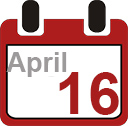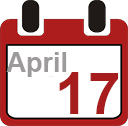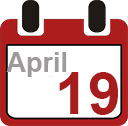ConVEx Baltimore Presentations
The ConVEx Baltimore program offers career-empowering knowledge, practical solutions, best practices, and the best networking in the industry.
IMPORTANT PROGRAMMING NOTE
The lineup and schedule posted here are based on current commitments from presenters and are subject to change.
Tuesday ~ April 18, 2023
Content is Many Things, But Most of All, It's a Product
Historically, one of the challenges of content development has been the perception of being a forgotten step-child within the org structure of most if not all companies. Many a manager know the struggle of getting approval for more people, tools, resources – “it’s just content…” after all. However, it today’s day and age, the value of content had dramatically shifted from a complimentary booklet/insert with a CD to a full-fledged self-service customer help centers. We may not be ready to transform content development into a revenue generating profit center yet, but we are at a point where our content is becoming increasingly important to the overall value of the product…. if not a product in and of itself. This session will discuss how the value of content has shifted and where I believe it is heading into the near future.
Vlad Khanin, LinkedIn
 Vlad Khanin is a Senior Manager of Content Strategy at LinkedIn Corporation. Vlad has been working in content development roles for over 25 years, with over a decade leading and building dynamic global teams, developing and implementing content strategy, git-DITA based content dev ecosystems, etc.
Vlad Khanin is a Senior Manager of Content Strategy at LinkedIn Corporation. Vlad has been working in content development roles for over 25 years, with over a decade leading and building dynamic global teams, developing and implementing content strategy, git-DITA based content dev ecosystems, etc.
Why Taxonomies Are the Secret Sauce
Even if you don’t realize it, you’ve seen taxonomies in action. You encounter them all of the time as you interact with and experience various information sites. We’ll look at the role taxonomies play in our daily lives. Ontologies and knowledge graphs will be explored, too. Numerous non-technical, relatable examples are presented that you can use as conversation starters at your workplace.
Lief Erickson, Intuitive Stack

Lief is a co-founder and principal consultant at Intuitive Stack. He has held positions as a technical writer, information architect, and content strategist. He holds a master’s degree in Content Strategy from FH Joanneum (Graz, Austria), where he teaches IA. He is a contributor to the DITA-OT project and presents on topics ranging from ContentOps, taxonomies, and search.
Best Practices for Agile-Ready Localization
From start-up to being listed on the stock exchange, growth can come fast in software publishing. The challenge is to keep content processes in sync with expanding teams and product lines.
While the Agile methodology has gone mainstream within the software development teams, it often stops there. Localization of documentation and user interface contents are in other silos and have mostly kept their waterfall practices.
In this presentation, we look at the benefits of deploying the Agile methodology not only with your development team, but also within your documentation and translation teams. And we show you the pitfalls and share best practices to make you an Agile global content black belt.
You will learn, based on real-life examples, how to go full Agile and build a smooth process from software development to release, with localized user interface and documentation.
Frederic Vallenet & Susy Harrison, WhP

Frederic has worked in localization for over 20 years. He started as a technical translator in the automotive and medical industries and then moved on to product internationalization management for large accounts in the Netherlands and France. He is currently working as a product manager and localization consultant at WhP, specializing in multimedia and structured documentation (DITA).

With 25 years’ experience in translation and localization, Susy takes a consultative approach with a genuine passion for providing customer service excellence. She is proficient in leading complex transformation and localization solutions to global organizations.
Where's Waldo? Finding data with content
Does your content contain part numbers, metrics, or external data? Many organizations don’t distinguish data and metadata from their content. When the values change, it’s like looking for needles in a haystack, which results in author inefficiency, inconsistent content, and value inaccuracy.
Join Amber Swope and Leigh White as they share their strategies for separating metadata and data from content.
Amber Swope, DITA Strategies & Leigh White, IXIASOFT

Amber Swope is an internationally recognized DITA expert and information architect. With over 20 years of experience in information development and 15 with DITA, Amber aids organizations in creating opportunity through IA. She helps teams build scalable IA solutions to future-enable their content and mentors team members to advance the IA as it evolves to meet new business needs.

Leigh is a DITA author and information architect, Open Toolkit geek, and conference veteran. A DITA Specialist on the Product Conception team at IXIASOFT, she is the author of DITA For Print: A DITA Open Toolkit Workbook and contributor to The Language of Content Strategy. In her spare time, she hikes and makes wood things.
Events, Data, and Information
Product content must inform the reader, but do we know what that means? There are as many definitions of “information” as there are people to ask. This presentation offers a working definition of “information” that we can use to plan, position, and evaluate our work. We’ll examine why we need this definition, and how to apply it to real-world problems.
Chris Despopoulos

Chris Despopoulos is a long-time technical writer. With decades in the field, he has documented an array of hardware and software products, implemented publishing tools, designed processes, and mentored writers. He is currently writing a book with the working title, “Events, Data, and Information: A Theoretical Approach to Technical Writing”.
Building Intelligent Content with iiRDS
iiRDS is gaining adoption as the metadata standard for technical documentation. This metadata standard is helping businesses to build out their metadata, taxonomies, and ontologies in an organized manner.
This presentation will examine what iiRDS is, the business problems it’s designed to solve, and show a demo of iiRDS applied to a content set.
Ted Wolff, Precision Content
 Ted Wolff is an Information Architect at Precision Content Authoring Solutions Inc with a wide variety of experience in structured content and technical communication. Ted has worked across multiple industries, including finance, insurance, manufacturing, transportation, and software development. He has also worked across content roles to hone a well-rounded content perspective, from content development, tools administration, team management, and consulting.
Ted Wolff is an Information Architect at Precision Content Authoring Solutions Inc with a wide variety of experience in structured content and technical communication. Ted has worked across multiple industries, including finance, insurance, manufacturing, transportation, and software development. He has also worked across content roles to hone a well-rounded content perspective, from content development, tools administration, team management, and consulting.
Machine Readable Content for Intelligent Assistants
This presentation will share how Ericsson has worked with improving the machine readability of technical content for use in the Ericsson Product Information Assistant. To meet people and industry expectations, product information must become intelligent and available for consumption in multiple channels. We will tell our story how to adapt existing content, including structures, knowledge graphs, metadata and writing guidelines.
Rebecca Andersson and Fredrik Smidfelt, Ericsson

Rebecca Andersson is a technical communicator with almost 20 years of experience of technical information in various roles, from technical writer to project coordinator and team leader. Current position includes strategies for the digitalization of technical content.
 Fredrik Smidfelt is a Product Owner at Ericsson. He has 25 years’ experience of technical information production in various positions and was the project manager of Ericsson’s transformation to topic-based writing using DITA. He is now the leader of the Intelligent Product Knowledge project.
Fredrik Smidfelt is a Product Owner at Ericsson. He has 25 years’ experience of technical information production in various positions and was the project manager of Ericsson’s transformation to topic-based writing using DITA. He is now the leader of the Intelligent Product Knowledge project.
Understanding Content Consumption Through a Data Lens
What happens when you have hundreds of millions of data points on content interactions from almost every industry and domain across the globe?
In this talk, Hannan Saltzman, co-founder of Zoomin, will reveal compelling insights around user behavior, trends and benchmarks that paint a picture of the state of the industry, all drawn from Zoomin Analytics data.
Hannan Saltzman, Zoomin Software

For over fifteen years, Hannan has been leading the design and execution of complex, market-leading enterprise products. At Zoomin, Hannan and his team develop innovative products that help organizations provide personalized, unified and consistent product information experiences across customer touchpoints.
Knowledge Hub Creation Challenges and Solutions
An enterprise knowledge hub brings together content from multiple repositories, applications, or silos with a single search and retrieval application. Challenges include defining the scope of content, purpose, users, and the taxonomy to tag the content and serving different uses. A case study presents tips and issues in setting up a knowledge hub that is combined with external user documentation.
Heather Hedden, Semantic Web Company

Heather Hedden has been creating and editing taxonomies for over 25 years for various employers and as a consultant. Since 2020, she has been a knowledge engineer with Semantic Web Company, vendor of PoolParty software for managing taxonomies, ontologies, and tagging. Heather also gives workshops on taxonomy creation and is author of the book The Accidental Taxonomist.
Troubleshooting: Key for Collaboration
If a business produces a product that people interact with, users will encounter problems. (A “perfect product” is a myth.) Companies have many tactics for addressing customer problems: service reps, Knowledgebase systems, product documentation, etc. What can happen when all these different silos converge to consider how best to solve customer problems? Can this be a wonderful opportunity for collaboration?
Kris Eberlein, Eberlein Consulting & Stan Doherty, Google

Kris is a DITA specialist and chair of the OASIS DITA Technical Committee.

Stan is a lifelong Boston resident. By day, he is a mild-mannered, technical writing manager for the Google Cloud Platform team. In his not-so-secret alt-life, Stan serves as a founding member of the OASIS DITA Technical Committee, a co-coordinator for the Boston DITA Users Group, and an organizer for a new ACM SIGDOC committee on Structured Authoring and Content Management.
The IoT and Technical Documentation
There is a growing recognition that effective technical communication systems can significantly improve the service and maintenance of plant and equipment. For example, reducing service and maintenance time by as much as 80%, while linking Illustrated Parts Lists or IETMs to fulfillment systems can raise significant revenue. Rik will give real-world examples and explore the best approaches to take.
Rik Page, Bluestream
 Rik has worked with component content and document management solutions for over 20 years. His practical experience ranges from high-volume data capture and content creation to dynamic multichannel delivery in various industries, including banking and finance, manufacturing, central government, and education. Rik has participated in multiple consultancy projects and helped formulate innovative solutions throughout Europe and North America.
Rik has worked with component content and document management solutions for over 20 years. His practical experience ranges from high-volume data capture and content creation to dynamic multichannel delivery in various industries, including banking and finance, manufacturing, central government, and education. Rik has participated in multiple consultancy projects and helped formulate innovative solutions throughout Europe and North America.
Using DITA for Business Processes
Our company has many internal documents that describe different business processes to maintain internal knowledge and procedures. We used a wiki but as the number of documents increased, it was difficult to handle this information. The DITA extensibility support makes DITA a good fit, storing semantic information that enable many automation processes and dynamic access to relevant topics.
George Bina, Syncro Soft / Oxygen XML Editor

George Bina is one of the founders of Syncro Soft, the company that develops Oxygen XML suite of XML editing, authoring, development, publishing and collaboration tools. He has more than 20 years of experience in working with XML and related technologies, bringing many innovative ideas to reality, contributing to XML-related open-source projects, and presenting at many XML and DITA conferences.
Improve Review Process ROI Today
You’ve invested money and time in a CCMS, or are planning to. How about you get more return on your investment by following these simple steps to improving your review process.
There are ways to drive engagement and reduce the time and effort by including your CCMS in your organization’s Quality Management System.
Find out how in this session.
Dipo Ajose-Coker, Componize Software
 With over 16 years combining languages and IT as a technical writer and editor working in regulated industries (high-end medical devices and finance), Dipo blends his experience of authoring in structured and unstructured environments; migrating technical publications to DITA; and content strategy to help develop a best in class CCMS. Dipo holds an MA in Multimedia and Multilingual Document Design.
With over 16 years combining languages and IT as a technical writer and editor working in regulated industries (high-end medical devices and finance), Dipo blends his experience of authoring in structured and unstructured environments; migrating technical publications to DITA; and content strategy to help develop a best in class CCMS. Dipo holds an MA in Multimedia and Multilingual Document Design.
Information Management on Web3
Web3 will supposedly revolutionize our experiences online, but how will it change our information management practices? This presentation will catch the audience up with the latest conversations in AI-powered content strategy, NFT metadata standards, and distributed alternatives to HTTP such as the InterPlanetary File System, with a focus on what has changed since the recent industry downturn.
Josh Anderson, Precision Content

Josh Anderson, CPTC, is an Information Architect at Precision Content. Josh was an English teacher in Japan and an SEO Specialist in the Chicagoland area before earning a Master of Information at the University of Toronto. He has been active with blockchain technologies since roughly 2014.
Transforming Documentation Teams into Profit Centers
In this session, I’ll review how companies can move product content from disparate silos in a single content management system (CMS).
Next, I’ll show how integrating a CMS with other enterprise systems (Salesforce, manufacturing controls systems, etc.) can not only improve the user experience, but can also transform documentation teams from cost centers to revenue-generating profit centers.
Kevin Meglic, ProSpring Technical Services
Photo and Bio coming soon
Optimizing the DITA Publication Pipeline
DITA is all about reuse, but when publishing to the web we tend to forget all about it and rebuild the entire content from scratch. This presentation shows how old tools can be used to solve the inevitable publication traffic jam. With unexpected free extras. Make your web content production faster than agile.
Jang Graat, Smart Information Design

Jang studied Physics, Psychology and Philosophy before embarking on a fast-track career in high performance parallel computing. He is a self-taught programmer and always tries to unblock people’s imagination. One of his nicknames is the Geek Philosopher. In the past 3 decades, he has delivered 100s of presentations and workshops to a wide variety of audiences around the globe.
No Editor? No problem! Tips for successful self-editing
Abstract Coming Soon
Dana Aubin, Comtech Services

Dana Aubin is a technical writer and content strategist based in Denver, Colorado, USA. She enjoys gluten-free baking, teaching her old dog new tricks, and karaoke spin class (virtually due to the pandemic, which is still quite fun for her, but maybe not for her spouse and dog).
Practical Git Workflows for Tech Docs
Practical aspects and workflows when using Git as a version control system for technical documentation using the DITA XML standard. See how a DITA XML documentation project can be stored on a Git repository along with common settings. Present common editing and collaboration workflows based on the common Git repository for technical writers.
Radu Coravu, Syncro Soft / Oxygen XML Editor
 Radu Coravu is a DITA XML expert working for oXygen XML Editor. His main focus is in the development of the visual XML Author editing environment and the specific-DITA support provided by oXygen. He provides support for complex integrations and helps steer the product in the right direction, all this with some development on the side.
Radu Coravu is a DITA XML expert working for oXygen XML Editor. His main focus is in the development of the visual XML Author editing environment and the specific-DITA support provided by oXygen. He provides support for complex integrations and helps steer the product in the right direction, all this with some development on the side.
Prove Your Worth with In-App Guidance
User needs can change quickly with new releases, technical issues, and their time spent in your online applications. Content Development / Tech writing teams can increase their value and reach by working cross-functionally with support, customer success, and user experience teams to determine how best to inform users in your applications with “guides”. Be both reactive and proactive! Create walkthroughs, tooltips, troubleshooting steps, and contextual help, and insert them in your application where and when they’re most needed based on current user needs, independent of product releases (no engineering required!!). Target specific user groups when needed. Then, examine real-time metrics, user success rates, and related support volume to demonstrate cost savings.
(Tool required: https://www.pendo.io/)
Gabrielle Scott and Elizabeth Diefendorf, NantHealth
 Gaby Scott, Senior Manager of Content Development at NantHealth, began her career writing user guides, has personally seen tech writing teams through two DITA migrations, and has recently dived headfirst into the Pendo.io world of in-app guidance. A strong advocate for the user, Gaby knows the value of seeking out user feedback and behavioral data to guide future content decisions.
Gaby Scott, Senior Manager of Content Development at NantHealth, began her career writing user guides, has personally seen tech writing teams through two DITA migrations, and has recently dived headfirst into the Pendo.io world of in-app guidance. A strong advocate for the user, Gaby knows the value of seeking out user feedback and behavioral data to guide future content decisions.

Elizabeth Diefendorf is the Senior Director of Training and Content Development at NantHealth, a software company that builds technology that simplifies healthcare. Passionate about user engagement, Elizabeth leads a team of writers, editors and trainers who work together to provide exceptional documentation and education. Elizabeth has her BS in Biology from LeMoyne College in Syracuse New York, and currently resides in Medford New Jersey.
Realize Your Schematron Impact with Xquery
Have you ever created a clever rule with the Editorial team, only to find out too late that it’s flagging half of the entire documentation corpus? Conversely, have you created a rule that is so specific that it never gets triggered? Learn how to analyze the impact of your rules using XQuery and BaseX.
Scott Hudson and Eliot Kimber, ServiceNow

Scott Hudson is a Staff Content Engineer at ServiceNow. He is also a long-time member of the OASIS DocBook and DITA Technical Committees. He specializes in content architecture, optimizing the DITA authoring experience, creating author assistance using Schematron and Vale, and evaluating new information technologies. He is a shameless Sci-Fi geek and FIRST robotics mentor.

Eliot Kimber is a founding member of the DITA Technical Committee, the W3C XML Working Group, and a long-time SGML and XML practitioner. Eliot is the primary developer of the open-source DITA For Publishers project and a contributor to DITA Open Toolkit. Eliot is a Senior Product Content Engineer for ServiceNow, Inc.
Dramatically Improve Your Documentation Quality
As technical writers, we write, get tech reviews, and still, we receive customer feedback complaining about our documents. What aren’t we doing? Research says that doing five doc usability studies will solve at least 75% of the problems customers face. Join me as we discover what doc usability studies are and how they provide fundamentally different feedback.
George Eckel, ServiceNow

Over twenty-five years of experience as a manager, principal writer, and content strategist working in high-profile companies, including Amazon, Intuit, and ServiceNow. Published author of best-selling, technical books by New Riders. Speaker at LavaCon, the CIDM ConVEx conference, and the Craft Summit at ServiceNow.
Reuse (and the devil is in the lightweight details)
Tired of hearing sessions about reuse that lack concrete details and clear best practices? Come hear a case study of how the DITA spec editors set up reuse between the DITA 2.0 and LwDITA 1.0 specifications. Because the source files for the DITA specifications are available to the public, you’ll be able to see all of the details. (In fact, you can download the source and explore it.) This reuse strategy, designed by adept DITA practitioners, uses almost all the DITA reuse mechanisms (@conref, @conkeyref, @keyref, filtering, and flagging) to share common content between specifications with dramatically different goals and audiences. And it does so carefully and thoughtfully, with an eye to balancing complexity and the benefit to the business.
Kris Eberlein, Eberlein Consulting

Kristen James Eberlein is a DITA solutions architect, She also chairs the OASIS DITA Technical Committee.
Content Quality is Not an Accident
KPIs for a natural language? Is it possible to measure the linguistic and terminological quality of content and influence it positively?
The presentation shows with examples how to define KPIs for texts and how to check the quality of content. The audience will learn about the possibilities Congree offers to draw conclusions about quality improvement measures from the measurement results.
Torsten Machert, Congree Language Technologies
 Torsten Machert studied Russian and Spanish at Humboldt University, Berlin. He spent 20+ years in leading positions in the CMS industry. At Congree, Torsten is working as Senior Consultant helping customers to improve their content quality.
Torsten Machert studied Russian and Spanish at Humboldt University, Berlin. He spent 20+ years in leading positions in the CMS industry. At Congree, Torsten is working as Senior Consultant helping customers to improve their content quality.
MiramoPDF, the No-code, Lo-code PDF formatter
DITA adoption can be daunting. The prospect of losing control of the document design process due to the complexity of coding based PDF formatting solutions can add to this apprehension. MiramoPDF allows end users to keep control, keep their existing designs, generate new designs and easily manage day to day maintenance – all without coding. Join us for our test kitchen where we will demonstrate how MiramoPDF works, and showcase some of the new features of the latest release, MiramoPDF 3.0.
Corinna Kinchin & Joanne Hannagen, Datazone

Corinna Kinchin is a graduate in Computer Science from Cambridge University, and is one of the lead developers of the Miramo product suite.

Joanne Hannagen, Business Development Manager
CCMS Agnostic Source Content Reviews
Watch and marvel as we use a CCMS agnostic solution to review DITA XML content, both collaboratively and with full audit trails that your auditors will thank you for!
The beauty is that it requires no training to use it, something that your SMEs will thank you for!
So it’s thanks all round and improved ROI on your CCMS investment.
See a demonstration of the tool, ask questions and maybe even have a little test run using your laptop, or tablet!
Dipo Ajose-Coker, Componize Software
 With over 16 years combining languages and IT as a technical writer and editor working in regulated industries (high-end medical devices and finance), Dipo blends his experience of authoring in structured and unstructured environments; migrating technical publications to DITA; and content strategy to help develop a best in class CCMS. Dipo holds an MA in Multimedia and Multilingual Document Design.
With over 16 years combining languages and IT as a technical writer and editor working in regulated industries (high-end medical devices and finance), Dipo blends his experience of authoring in structured and unstructured environments; migrating technical publications to DITA; and content strategy to help develop a best in class CCMS. Dipo holds an MA in Multimedia and Multilingual Document Design.
Inside Paligo: Live Product Demonstration + Q&A with the Experts
Companies seek to make their documentation more efficient through single-sourcing and reuse. But many single-sourcing projects fail due to the steep learning curves and costs of implementation of traditional systems. So cloud-based solutions like Paligo aim to enable greater collaboration and efficiency. Using modern web technology reduces the costs of implementation, to increase usability and thereby user acceptance. A true cloud-based authoring and publishing platform to reuse and single-source documentation with a clear focus on usability and user acceptance can improve the chance of realizing the return of investment and actually achieving the increase in efficiency. Why not learn all about it here at ConVEx?
Michael Hovan, Paligo
 As a content strategist and technical writer, the majority of Mike’s work has been in the financial, real estate, and insurance industries. He’s done UX writing for online banking platforms, managed content migrations, and built context-sensitive help systems from the ground up. Mike also developed the content for an interactive credit card fraud alert system which is now in use by a top bank. Helping to address complex technical communication challenges provides him with a great deal of personal satisfaction.
As a content strategist and technical writer, the majority of Mike’s work has been in the financial, real estate, and insurance industries. He’s done UX writing for online banking platforms, managed content migrations, and built context-sensitive help systems from the ground up. Mike also developed the content for an interactive credit card fraud alert system which is now in use by a top bank. Helping to address complex technical communication challenges provides him with a great deal of personal satisfaction.
Go Agile with Video Localization
To fully engage with your brand, users worldwide need videos in their native language, complete with subtitles and voice-over. Traditional video translation requires time and a large budget. For each language, you must select a voice talent that matches your sonic branding; you then provide a pronunciation guide for your brand names and other key terms; and before publishing you must validate pronunciation and synchronization.
Frederic Vallenet, WhP

Frederic has worked in localization for over 20 years. He started as a technical translator in the automotive and medical industries and then moved on to product internationalization management for large accounts in the Netherlands and France. He is currently working as a product manager and localization consultant at WhP, specializing in multimedia and structured documentation (DITA).
Be a Fly as a Group of Content Leaders Discuss AI!
Have you ever wanted to be a fly on the wall when content heavy hitters are discussing the most important issues of the day? Here’s your chance! In this session, you’ll listen in as an exclusive Content & Self-help Leadership Huddle discusses the ands, ifs, and buts about ChatGPT and using AI for content development processes. In this session, you’ll hear content Directors and VPs discuss how ChatGPT and AI are impacting or will impact their content strategy, including (but not limited to):
- The benefits and use cases for using AI in content (future exploitation, educate your tech teams on what they can do for you)
- The risks of AI in content development (copyright, plagiarism, currency of information, violating customer trust)
- Things to consider when writing an AI in content policy
- Ways to address the notion that chatbots will take our tech writers’ jobs
The panel:










Megan Gilhooly – Sr. Director Self-help & Content Strategy, Reltio
Michael Iantosca – Sr. Director Platform & Tools, Avalara
Kelly Lawetz – Director Unified Content Services, Genetec
Jennifer Kaufman – Director, Information Engineering, NetApp
Terri Schmidt – Head of Content Strategy & Analytics, Google Cloud
Malachy Lavelle – Director Information Engineering, Avaya
Charissa Fleischer – Director Product Documentation, Exabeam
Fawn Damitio – AI Systems and Experiences Documentation Engineering Senior Manager, Meta
Peggy Sanchez – Sr. Manager Knowledge Management & Training, HPE
Toni Mantych – Sr. Director Content Strategy, Customer Org, ServiceNow
Experience Content with Micro-content
In these evolving and diversifying times, the perception of content is changing to “Shorter the best”. In this process, I take the chunking of content into the picture. I want you to experience the environment in which your content lives, the structure designing, and at the same time, engage your users with the concepts of micro-content.
What can the audience expect to learn?
The big-picture goal to diversify your micro-content strategy while using it to supplement your overall content/engagement efforts will be the key takeaway for the audience. The questions of W’s and H’s of practical applications to implement micro-content will be answered.
Sahitya Kesarapu, Cloud Software Group

Sahitya Kesarapu, Senior Technical writer at Cloud Software Group. She is expertise in writing the documentation for enterprise and cloud products. She is passionate about adopting innovative information architecture approaches to solve content problems. Sahitya holds Bachelor of Technology in Electronics and Communication Engineering.
Overcoming Change Anxiety: Regression Test 5,000 pages in under 5 minutes. Live Product Demonstration of Antenna House’s Regression Testing System
When should regression testing be performed?
Regression analysis of PDFs allow you to test system changes, changes to CMS, changes to stylesheet, changes to formatting software, changes to graphic software.
Regression testing should take place anytime your system, hardware or software changes, to determine if what was correct in the output is still correct in output. Changes may result in content disappearing, incorrect formatting, changes to the integrity of images, tables and many other (sometimes subtle) issues that invalidate the reliability of the document.
Antenna House Regression Testing System is for Automated – Fast – Accurate PDF to PDF & Image to Image Visual Comparisons
Michael Miller, Antenna House
 Michael Miller is Vice President of Antenna House, Inc., a company that has developed one of the leading standards‐based (XSL‐FO and CSS) document formatting software products on the market today. Michael has a degree in Printing Engineering and Management and has been involved in high‐end composition, document formatting, and document management for over 40 years. He has an extensive background with structured data, including SGML, XML, S1000D, and DITA. During his career he has worked in Europe and North America and has been involved in the implementations of some of the largest fully‐automated publishing and document formatting projects.
Michael Miller is Vice President of Antenna House, Inc., a company that has developed one of the leading standards‐based (XSL‐FO and CSS) document formatting software products on the market today. Michael has a degree in Printing Engineering and Management and has been involved in high‐end composition, document formatting, and document management for over 40 years. He has an extensive background with structured data, including SGML, XML, S1000D, and DITA. During his career he has worked in Europe and North America and has been involved in the implementations of some of the largest fully‐automated publishing and document formatting projects.
Challenges Impacting Technical Documentation Team Capability
To gain a deeper understanding of the challenges faced by technical documentation teams, The Content Wrangler, Content Science, and CIDM conducted a recent survey of technical documentation managers. During this presentation you’ll learn about the top three challenges facing technical documentation teams today. And, you’ll discover several improvements technical documentation managers say they are hoping to implement.
These findings will help technical communication organizations to better navigate the challenges and opportunities associated with technical documentation and its impact.
Scott Abel, The Content Wrangler

Dubbed “The Content Wrangler,” Scott Abel is the Founder and President of The Content Wrangler Inc, a global content strategy consultancy. Scott Abel is a content management strategist and exponential growth evangelist. He specializes in helping content-heavy organizations improve the way they author, maintain, publish and archive their information assets.
Scott publishes a series of content strategy books for XML Press and is the producer of several content industry events including Technical Documentation Roundup and Information Development World.
Omnisource and Omnichannel: Your Content GPT must be an Omnivore
We’re enchanted by the answers delivered by GPT, but the answers are only as good as its diet. Federation of content is no longer sufficient. You need content orchestration and ingestion for GPT to thrive. And you need to be sensitive to your users’ content restrictions through strict governance. Visit this Kitchen to see how Zoomin cooks up a varied diet consisting of all major content food groups: documentation, knowledge articles, community discussions, learning and training, topped off with a dose of API devdocs. See how ZoominGPT can serve your customers answers wherever they go – even inside your product.
Joe Gelb, Zoomin

Joe Gelb President and Co-Founder Joe Gelb has more than 25 years of experience helping enterprises implement and capitalize on customer-facing technical content. At Zoomin, he and his team has spearheaded the development of advanced technology solutions for digital experience, helping organizations reduce customer effort by providing personalized and consistent product information at the point of need.





